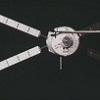In our Future of the Environment issue, we mentioned one visionary’s suggestions: self-sinking tungsten spheres that stash spent nuclear fuel deep beneath the Earth’s surface. That idea is a long way from reality, but in our green-energy-starved present, it may be worth considering all options, no matter how wacky.
Nuclear reactors create high-level nuclear waste, composed of spent fuel rods loaded with the still-radioactive isotopes created when uranium-235 fissions. Some of those isotopes, like cesium-137 and strontium-90, have half-lives of 30 years or so — but high-level waste also includes plutonium-239, which has a half-life of 24,000 years. Thanks to the fission process, fuel rods are actually more radioactive when they come out of the reactor than when they go in. But at the moment, using the spent rods as a source of fuel just isn’t cost effective. And 24,000-year storage solutions are hard to come by, it turns out.
Additional reporting by John Bradley
Popular Science has been a leading source of science, technology and gadget news since 1872. With up-to-the minute latest space news, insightful commentary on the new innovations and concept cars ...if it's new or future technology you'll find it at popsci.com.au.






